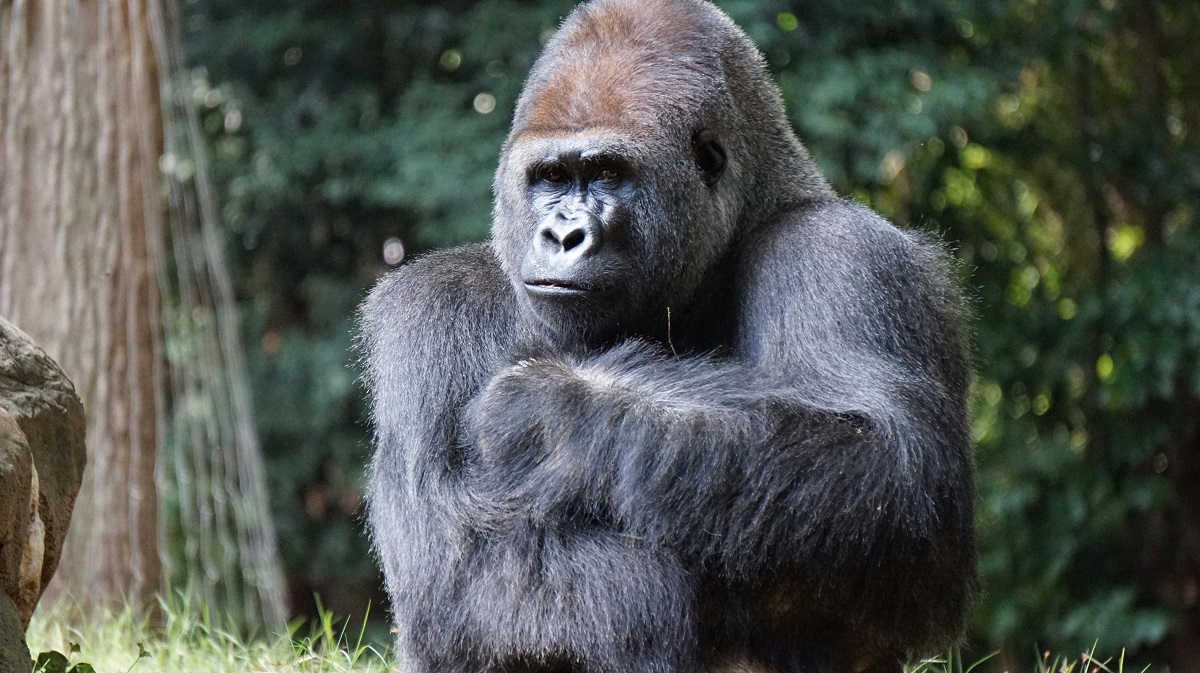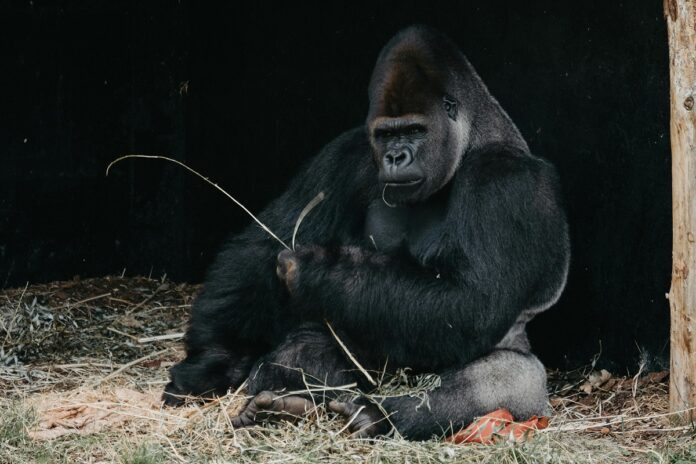The western lowland gorilla, a subspecies of the western gorilla (Gorilla gorilla), is the most numerous and widely distributed of all gorilla species. Despite this, its population has been in sharp decline due to a combination of human-induced threats, including habitat destruction, illegal hunting, and infectious diseases.
These magnificent primates primarily inhabit the dense rainforests, swampy lowlands, and secondary forests of Central Africa, with their range spanning across countries such as Cameroon, the Central African Republic, Gabon, Equatorial Guinea, the Democratic Republic of Congo, and Angola.
Physical Characteristics

Western lowland gorillas exhibit notable sexual dimorphism, with adult males, known as silverbacks, being significantly larger than females. A mature silverback can stand between 4 to 5.5 feet tall when upright and weigh anywhere from 300 to 500 pounds, its imposing size reinforced by a muscular build and a distinctive silver-gray saddle of hair on its back.
Females, in contrast, are generally smaller, averaging around 4 feet in height and weighing between 150 to 200 pounds. Their fur is typically darker than that of their eastern counterparts, ranging from deep brown to jet black, which helps them blend into the shadowy undergrowth of their forest habitats.
Diet and Foraging Behavior
These gorillas are primarily herbivorous, with a diet consisting mostly of fruits, leaves, stems, and shoots. They play a crucial role in their ecosystem as seed dispersers, aiding in forest regeneration by spreading seeds through their feces.
During certain seasons, when fruit is scarce, they supplement their diet with bark, roots, and even small invertebrates such as termites and ants. Their foraging habits require them to travel considerable distances within their home ranges, which can extend up to 10 to 15 square miles, depending on food availability.
Social Structure and Behavior
Western lowland gorillas live in stable, cohesive family groups typically led by a dominant silverback, who is responsible for protecting the group and mediating conflicts. These groups usually consist of 5 to 10 individuals, including several adult females, their offspring, and occasionally subordinate males. Unlike some primate species, gorilla groups are generally non-territorial, with overlapping home ranges that reduce violent confrontations between different families.
Communication within these groups is complex, involving a combination of vocalizations, body postures, and facial expressions. Low, rumbling chest beats—often performed by silverbacks—serve as both a display of strength and a means of long-distance communication. Gentle grunts and barks are used for maintaining group cohesion, while subtle gestures and eye contact help reinforce social bonds.
Reproduction and Lifespan
Females reach sexual maturity at around 8 to 10 years of age, whereas males mature later, usually between 12 to 15 years. The gestation period lasts approximately 8.5 months, after which a single infant is born, weighing only about 4 pounds. Infant gorillas are entirely dependent on their mothers for the first few years of life, clinging to her back as she moves through the forest. Young gorillas remain with their natal group until they reach maturity, at which point males may leave to form their own groups or live solitarily until they can attract females.
In the wild, western lowland gorillas can live up to 35 to 40 years, though their lifespan is often shorter due to predation, disease, and human-related threats. In captivity, where they receive consistent care and medical attention, some individuals have been known to live beyond 50 years.
Interesting Facts About Western Lowland Gorillas
They are 98% genetically similar to humans—our closest relatives after chimpanzees.
They rarely drink water—they get most of their hydration from food.
They can use tools—some gorillas use sticks to test water depth or break open nuts.
They have unique nose prints—like human fingerprints, no two gorillas have the same nose shape.
They are shy but curious—they usually avoid humans but may watch from a distance.

